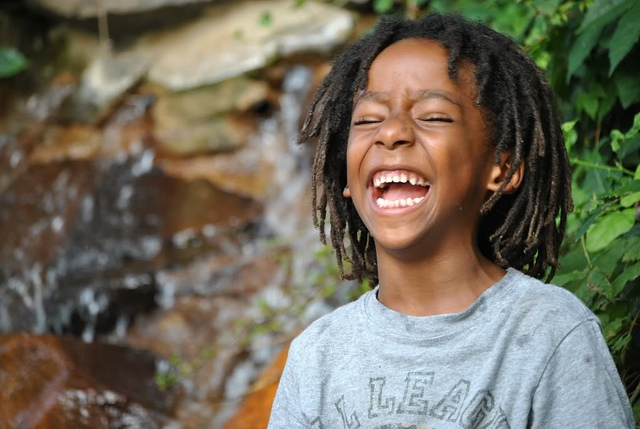I remember once reading an article that proposed that our deepest passions and the things we love are solidified by the age of 12.
This doesn’t mean that we don’t go on to discover new passions, but our basic temperaments are essentially laid in place like reliable foundations from which our future desires can spring. And although those future desires may have variations, they are essentially just different versions of the same things we wanted at the age of 12.
Of course, despite the fact that “I won’t grow up” became a defiant sort of mantra for me when I was a child, I eventually did. Adulthood has its share of joys and losses, but I remember the promise I made to myself when I was a young girl: to never forget who I was and to hold that rebellious, intransigent spirit in reverence for the rest of my life.
While I may not necessarily always hold true to my promise, I’ve done plenty of inner child work that isn’t just about allaying the wounds of the past, but also celebrating everything I held near and dear in those years when the sky was truly the limit and possibility was anything but impractical.
Even though many of us didn’t have the happiest childhoods, the seeds of what we grow to love, nurture, or maybe even secretly pine after are present when we are children. While many of us grow up to either forget those things or view them as frivolous, they are far from nostalgic keepsakes that remind us of a different time in our lives—they are part of the blueprint of our desire, part of what makes us singular and whole.
When I was 12 years old, I had an intense love for the following things: feeling the wind flying across my skin and through my hair when I was on a swing or whipping through my neighborhood on a bicycle; reading (the library was my second home); writing (to the extent that people seldom left their pens lying around, because I would most certainly “borrow” them to draft long treatises and epic poems); and climbing trees (which often eventuated in falling out of them).
I still love each and every one of these, but of all of them, writing is perhaps what I do most frequently. The others? Not so much at all. (And I have to admit…the thought of wending up the gnarled branches of a friendly-looking oak tree sounds particularly seductive right now!)
Why is it important to connect to your inner child in such a way that you are actually engaging in activities that once brought you an enormous amount of joy?
While many people tend to encourage therapies focused on getting in touch with our inner “wounded” child, it is seldom emphasized that this part of ourselves that we’ve neglected for so long is also the part of ourselves that feels joy. It is the part of us that inflates like a balloon full of light when we are wholeheartedly connected to our desires, which give us the experience of complete aliveness—for no other reason than that it feels good! Our inner child is the part of us that does what feels good for the sake of love and pleasure rather than achievement. I have fond memories of being absorbed in a task as simple as going on a nature walk and connecting with flowers and insects as if they were microcosms unto themselves.
Our inner child enables us to see all the details as significant, as pointing to worlds within worlds. It sparks our ability to feel magic and to find beauty in even the most mundane details. (Perhaps this is why a cardboard box masquerading as a spaceship was enough to make me swoon at one time in my life!)
I want to be clear that connecting with what we most loved when we were children isn’t the same as reclaiming our innocence, which is a fantasy that I don’t believe is worth traipsing after. After all, while our essential nature is something we always carry with us, the circumstances of our lives work like a hammer to shape that nature. We must honor both the raw material and the manner in which it has been shaped by our lives. To connect with our inner child is to hit the bedrock of our essential resilience, however—this comes from our natural birthright of love and pleasure. We are accessing an often-untapped aspect of our lives that is about taking the path of flow, of least resistance. When we re-enter that often-abandoned space in our psyches, we learn that we have all the conditions that we need to find liberation from a life of dullness, boredom, and soul-crushing obligations.
I don’t mean to idealize the period of our childhood. Believe me, I am fully aware that it can come with its fair share of pain and that many of us have had the experience of growing up too fast. But when it comes to understanding our essence, it’s really as uncomplicated as remembering to remember who we were at a time in our lives that was fundamental to our development as human beings.
When we were younger, it is likely that while our lives may not have necessarily been all that simple, our connection to love was. We were perhaps more instinctively able to reach for our desires, no matter what the response may have been. For example, one of my earliest desires came about at the age of 10, when I spent an entire spellbound summer reading Little Women, climbing trees, and planning my first novel: a book about a little girl who discovers the existence of unicorns in her urban backyard. To this day, these are still three things I love (although I’ve since graduated from unicorns to dragons).
Here’s a simple exercise that will help you connect with your inner child:
Take some time to reflect on a childhood memory that encompasses an experience of joy and love. Perhaps your memory revolves around a family vacation, a special holiday, or a trip to an amusement park.
Let the memory fill you with the same experience of magic and wonder that you felt at the time it happened.
Summon any details you recall so that the memory feels almost life-like.
Stay in the experience as long as you like, and take some time to journal about the experience afterwards. Note what was occurring in the memory. What are the specific sensory details of the scene (sounds, sights, smells, sensations, anything else occurring in the environment)? Are there any moments in your later life that evoke similar feelings?
Now, see how you can go about incorporating that feeling of childlike presence and wonder into your day. Do something that honors your inner child and that memory; it might be as small as buying an ice-cream cone on your way home from work, or pulling out a coloring book and cranking up your favorite music.
Don’t be surprised to find that whatever lit you up so long ago still infuses you with happiness.
Notice how it feels to live your life from this place of effortless joy.
Author: Nirmala Nataraj
Image: cheriejoyful/Flickr
Editor: Emily Bartran



Read 0 comments and reply